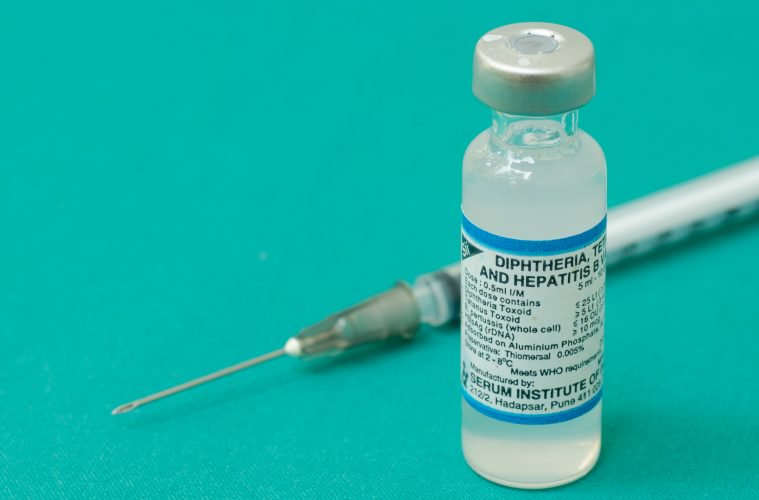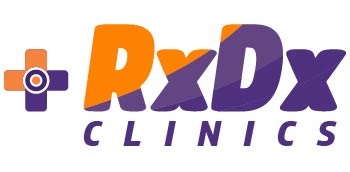
What is DPT vaccine?
DPT vaccine is a combination vaccine used for immunisation against Diptheria, Pertussis, and Tetanus. DPT vaccine protects your child (younger than age 7 ) and helps them to develop immunity against these deadly diseases. It also helps to reduce the reservoir of pertussis in the population at large and thereby potentially decreasing exposure of individuals at increased risk for complicated infection (e.g., infants).
What is Diphtheria?
Diphtheria is a localised infection of mucous membrane or the skin caused by Corynebacterium diphtheria. It is also suspected to be associated with the formation of pseudomembrane at the site of infection. Systemic effects are due to the production of the diphtheria toxin, a gene for present in specific corynephages.
Occurrence
It particularly affects children aged between 1-5 years. But a shift in age incidence has been observed from preschool to school age. People of higher age group may also contract diphtheria infection.
What is Pertussis?
Commonly known as whooping cough or the hundred day disease, pertussis is a highly contagious acute infection of the respiratory tract caused by Bordetella pertussis. It is clinically characterised by an insidious onset of mild fever and an irritating cough which gradually becomes paroxysmal with the characteristic inspiratory “whoop” (loud crowing inspiration). It is also associated with thick, tenacious salivation that often terminates in vomiting.
What is Tetanus?
Tetanus is a neurological disorder characterised by increased muscle tone and spasms, caused by tetanospasmin ( exotoxin liberated by Clostridium tetani). It occurs in several clinical forms, viz. Generalised, localised and neonatal tetanus. Despite the availability of effective vaccination since 1923, tetanus remains a major health problem in the developing world.
Types of DPT vaccines
- DPwT
- DTaP
- dTap
DPwT
Popularly known as the triple antigen, DTwP is composed of tetanus (5LF) and diphtheria toxoids (25LF) as well as killed whole-cell pertussis bacilli adsorbed in insoluble aluminum salts which act as adjuvant.
Efficacy:
The efficacy of different whole-cell pertussis (wP) products varies substantially not only in different studies across different parts of the world but also with the case definition of the disease employed.
The efficacy of wP alone ranged from 61% to 89%, and the efficacy of combination DtwP vaccines ranged from 46% to 92%. However,there is no known immune correlation of protection for pertussis vaccines. Immunity against all three components wanes over the next 6–12 years and thus regular boosting is needed.
Adverse effects:
Minor adverse reactions such as pain, swelling and redness at the local site, fever, fussiness, anorexia and vomiting are reported in almost half of the cases after any of the 3 primary doses.
Serious adverse effects such as high-grade fever (temp >40.5 C), persistent crying, hypotonic-hyporesponsive episodes (HHE), seizures and encephalopathy have been reported are extremely rare.
Recommendations for use:
- The standard schedule is three primary doses at 6, 10 and 14 weeks and two boosters at 15–18 months and 5 years.
- The schedule for the catch-up vaccination is three doses at 0, 1 and 6 months. The 2nd childhood booster is not required if the last dose has been given beyond the age of 4 years.
- DTwP is not recommended for kids aged 7 years and older due to increased risk of side effects.
- It is essential to immunise even those recovering from diphtheria, tetanus and pertussis as the natural disease does not offer complete protection.
DTaP Vaccines
Popularly known as the painless vaccine as all acellular (aP) vaccines, these are associated with significantly lesser side-effects, and thus the replacement of the whole cell (wP) vaccines was mainly driven by the safety profile of these vaccines.
DTaP is composed of Diphtheria toxoid (25 Lf), tetanus toxoid (5 Lf) and acellular pertussis vaccine.
Adverse effects:
The DTaP vaccines score over the wP vaccines regarding adverse effects. The incidence of both minor and major adverse effects is reduced by two thirds with the aP vaccines.
Correlation of protection of wP and aP vaccines:
Studies have shown that components of DTaP vaccines were highly immunogenic with good antibody titers to all the individual antigens contained in the vaccine. Some DTaP vaccines, in fact, had better sero-response than the DTwP tested along with the DTaP vaccines. Unfortunately, there is no serological correlation of the clinical efficacy of the vaccines to prevent pertussis.
Things to remember:
- The vaccines should be stored at 2 to 8°C, and the recommended dose is 0.5 ml intramuscularly.
- The schedule is same as with DTwP vaccines. Like DTwP vaccines, DTaP vaccines must not be used in children 7 years or older because of increased reactogenicity.
- DTaP vaccine/combinations should preferably be avoided for the primary series.
- DTaP may be preferred to DTwP in children with a history of severe adverse effects after previous dose/s of DTwP or children with neurologic disorders.
- First and second boosters may also be of DTwP. However, considering higher reactogenicity, DTaP can be considered for the boosters.
Contraindications and precautions:
Contraindications
- An immediate anaphylactic reaction.
- Encephalopathy which occurred within 7 days following DTP vaccination.
Precautions
- A temperature of ≥ 40.5°C (105°F) within 48 hours not due to another identifiable cause.
- Collapse or shock-like state (hypotonic-hyporesponsive episode) within 48 hours.
- Persistent, inconsolable crying lasting ≥ 3 hours, occurring within 48 hours.
- Convulsions with or without fever occurring within 3 days.
Tdap Vaccine:
Immunity against pertussis following primary/booster DTwP/DTaP vaccination wanes over the next 6–12 years. Hence, several developed countries have instituted routine booster immunization of adolescents and adults with standard quantity tetanus toxoid and reduced quantity diphtheria and acellular pertussis vaccine (Tdap) instead of Td.
The standard strength DTwP and DTaP vaccines cannot be used for vaccination of children 7 years and above due to increased reactogenicity.
Recommended schedule:
One dose of Tdap to all adolescents aged 11 through 12 years.
Minimum age: 7 years.
Catch-up vaccination:
• Catch up below 7 years: DTwP/DTaP at 0, 1 and 6 months;
• Catch up of persons aged 7 through 10years: Tdap, Td, and Td at 0, 1 and 6 months.
• Catch up of persons aged 11 through 18 years who have not received Tdap vaccine should receive a dose followed by tetanus and diphtheria toxoids (Td) booster doses every 10 years thereafter.
Tabular chart for various types of reactions
| Mild Reactions | Moderate to Serious Reactions | Severe Reactions |
|
|
|
For booking appointments, call us @ +91-80-49261111, +91-80-67458111 (or)
Download RxDx Smart Healthcare App Now!!!




